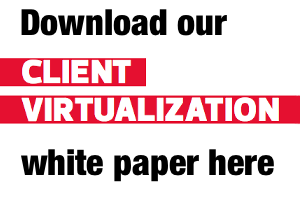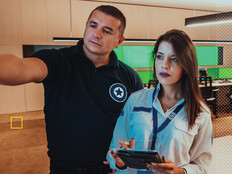The Five Architectures of Client Virtualization
This is an excerpt from our Client Virtualization whitepaper. Download the rest for free here.
Client virtualization architectures fall into five main groups, broadly categorized by three main characteristics:
- Where the processing takes place, either on the desktop/device or in the data center
- What is delivered to the user, individual applications or an entire desktop environment
- How user specific settings (user profiles) are managed
Presentation virtualization, also referred to as terminal services or remote desktop services (RDS), is the most mature and most widely used client virtualization architecture, with approximately 100 million licenses in use today. In a presentation virtualization environment, applications run on shared Windows servers hosted in a remote data center with only the application’s user interface presented on the user’s desktop.
User input is redirected over the network to the server using a dedicated remote-display protocol. The client can be either a dedicated hardware device, a thin client (essentially, a stripped-down PC with no hard drive) or a software client that runs on a converted PC, tablet or smartphone.
Virtual desktop infrastructure (VDI), also referred to as server-hosted virtual desktops, is an evolutionary step beyond presentation virtualization that has yet to achieve widespread acceptance. By late 2011, approximately 20 million VDI desktops had been deployed, although adoption is accelerating as the technology matures and projects move beyond pilot stages.
Like presentation virtualization, VDI runs on a shared infrastructure hosted in a central data center and uses the same thin client remote display technology. But, whereas presentation virtualization utilizes a shared-server operating system to deliver individual applications, VDI uses a standard desktop operating system running on a hypervisor.
This offers greater application compatibility than server-based presentation virtualization implementations — but at a cost. VDI is significantly more expensive than presentation virtualization. Moreover, government IT organizations have to give careful consideration to choosing the appropriate VDI technology.
Intelligent desktop virtualization (IDV), also referred to as distributed-desktop virtualization, is the reverse of VDI. Whereas VDI replaces a conventional desktop PC with a thin client or tablet and hosts the desktop OS on a server hypervisor in the data center, IDV implementations retain a conventional desktop PC at the endpoint running a locally installed client hypervisor to host the desktop environment.
The IDV approach is potentially less disruptive than VDI in that it does not require a large data center investment. And because all the applications are installed locally, it allows for offline operation. At the same time, however, IDV requires greater security, especially when used with mobile PCs. Plus, at present, IDV does not support mobile clients such as smartphones and tablets.
Application virtualization and application streaming are closely related technologies that can form the basis of a complete client virtualization solution. Or they may be used in conjunction with both presentation virtualization and VDI. With application virtualization, applications run locally on the computing device, but they are not installed on the device in the conventional sense of the term.
Instead, applications are packaged so that they run inside a virtualization layer that controls access to the underlying operating system. This removes many operating system-specific dependencies and allows applications to run in environments that would otherwise cause compatibility problems.
Application streaming extends application virtualization to the data center by optimizing the package so that the components needed to launch the application get delivered first, with the rest of the package components delivered on an as-needed basis. This allows organizations to host applications in a central location and stream them to the desktop at runtime instead of loading them on a desktop or other computing device in advance.
Both application virtualization and application streaming can be used in conjunction with presentation virtualization and VDI to simplify operational management challenges by reducing the number of applications installed directly into the operating system. This reduces both application compatibility issues and the amount of regression testing needed following any application or operating system changes.
It is also beneficial in environments where VDI is used in conjunction with conventional or IDV desktops. A single application virtualization package can be used across presentation virtualization, VDI, IDV and conventional desktops. This eliminates duplication of effort in developing application installation packages for each different environment.
User profile virtualization (or simply user virtualization) seamlessly delivers a standard client configuration not only to users’ desktop PCs, but also to all other forms of client virtualization. Regardless of how client virtualization is implemented, it is important to understand that a successful, productive environment must account for the user experience.
As smartphones and tablets proliferate, the number of computing devices that a user might interact with in the course of conducting government business increases. Because of this, it is important to ensure a consistent user experience across all platforms at all times.
For example, a change to application preferences on one device must be reflected across all of them, whether the user is accessing the application on a mobile device or at a conventional desktop. Through user profile virtualization, what a worker sees on one device is what is seen on all devices.
User profile virtualization can also be invaluable during planned desktop infrastructure upgrades. For instance, with less than two years before support for Windows XP officially ends, government agencies are looking to migrate to Windows 7. User profile virtualization can make it significantly easier for IT to transition user profile settings from one operating system to the other.








